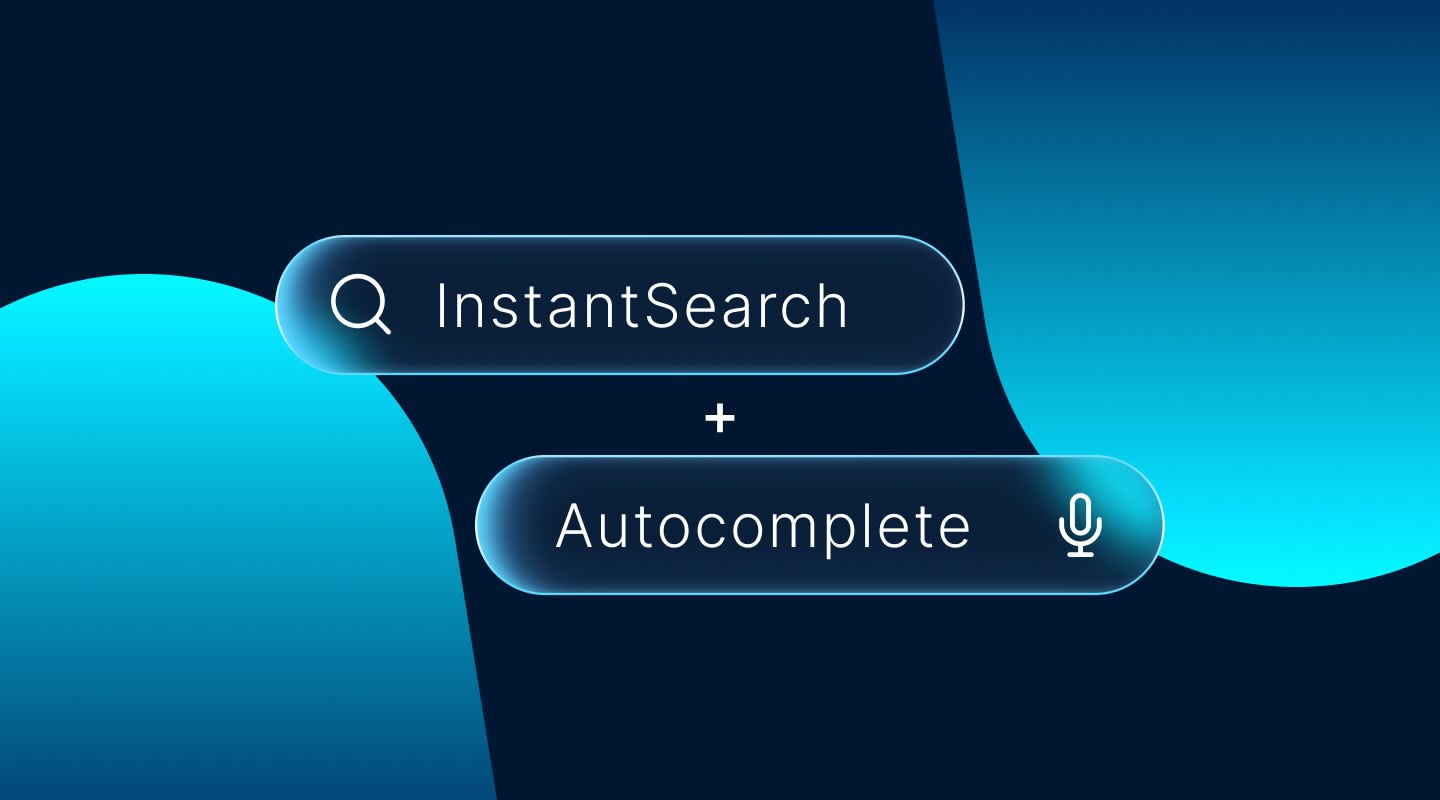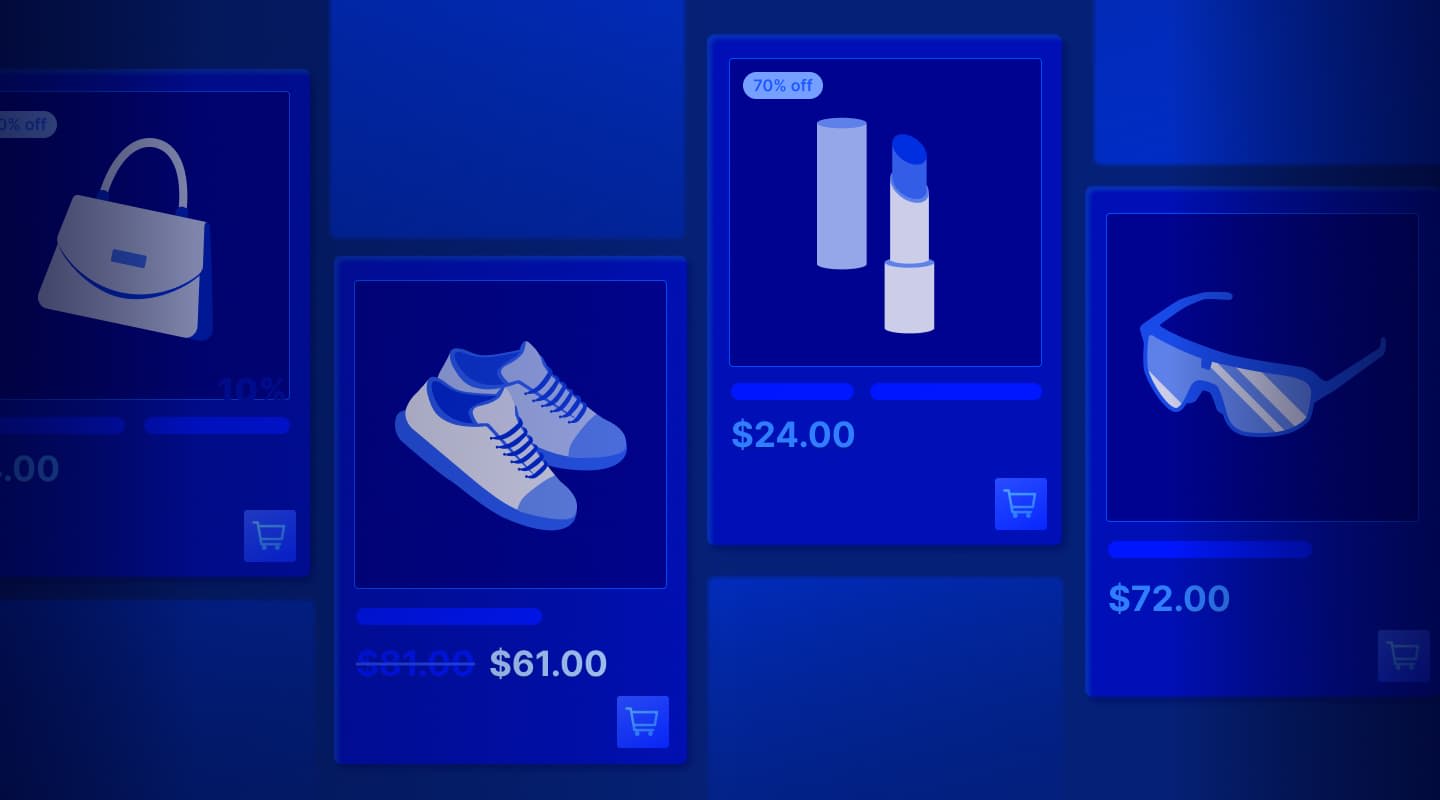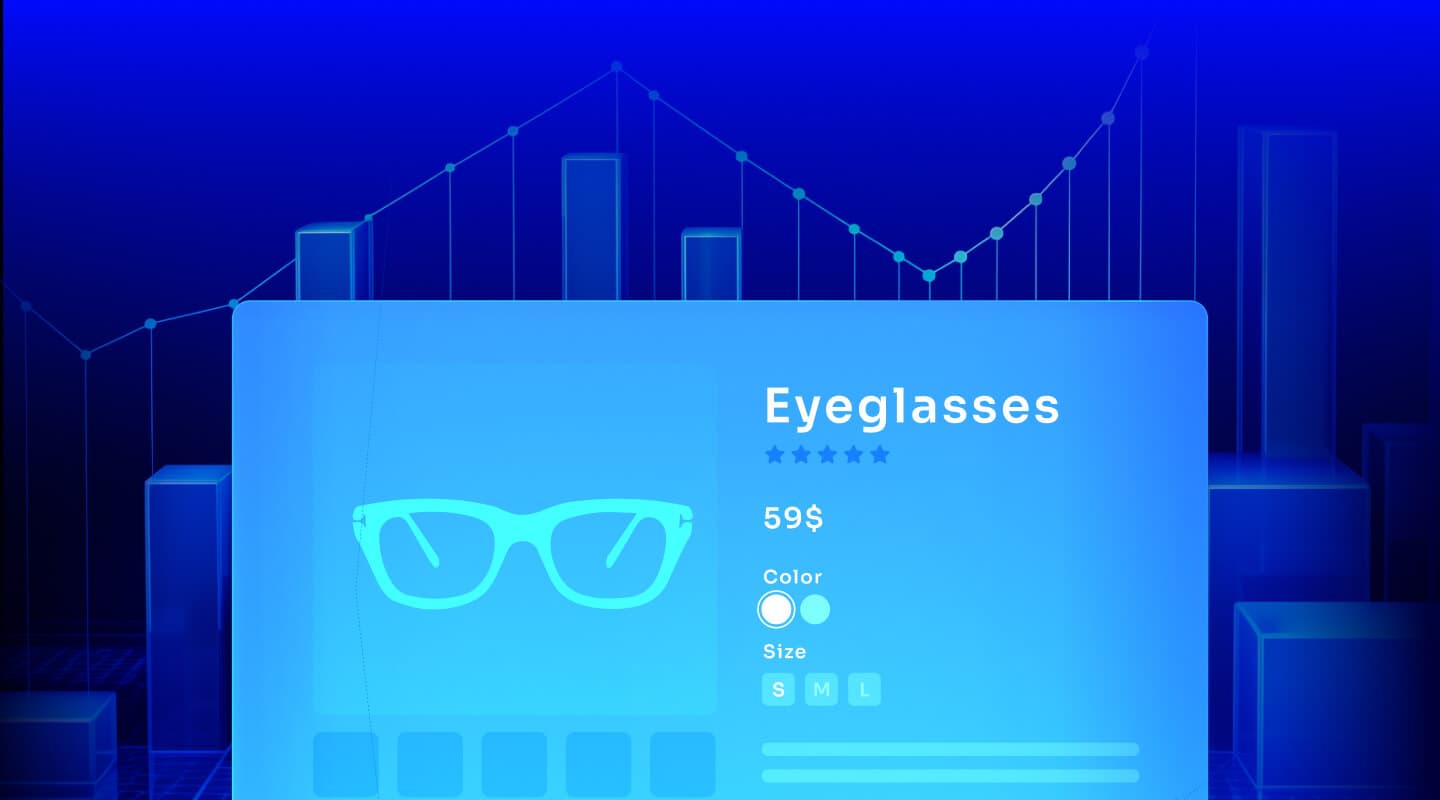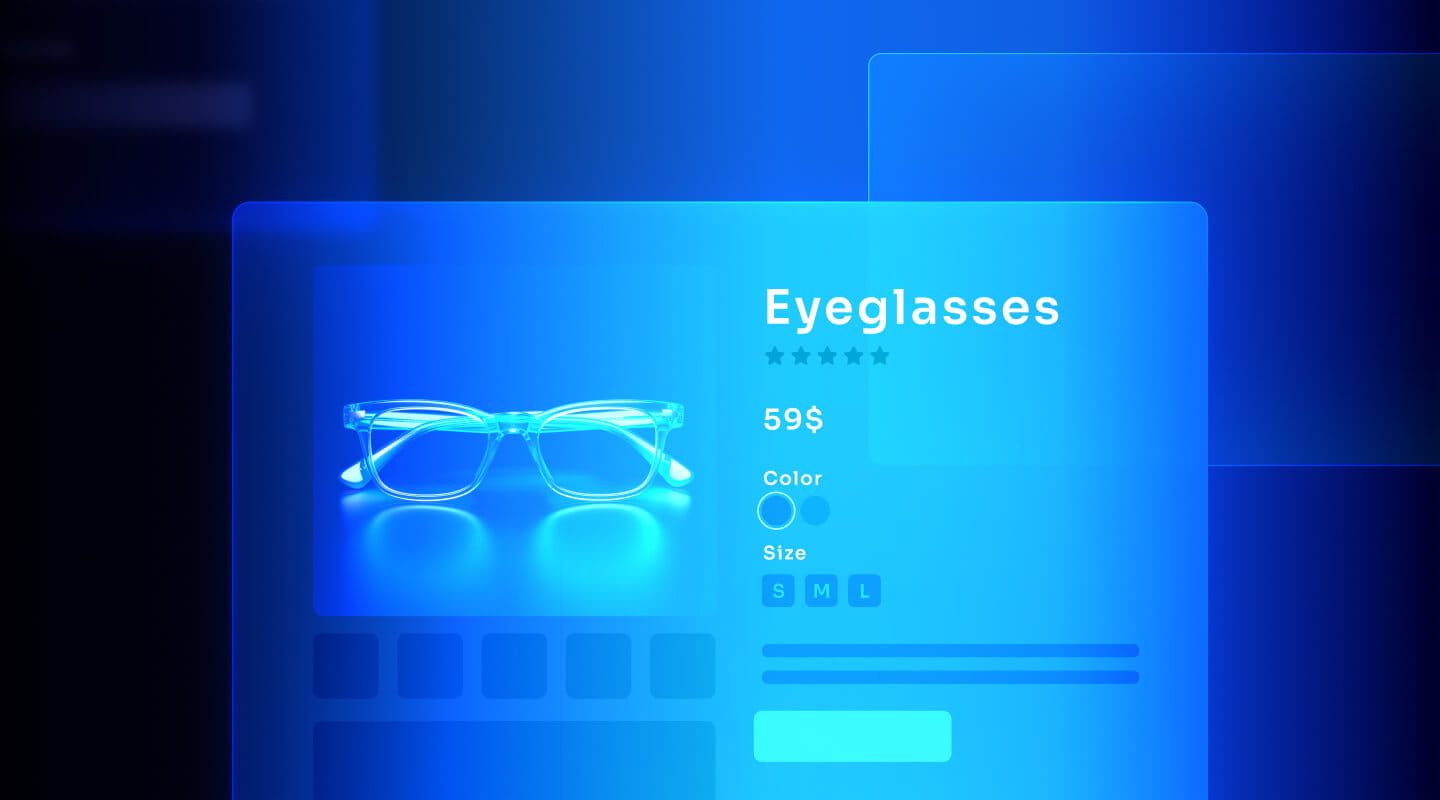Add InstantSearch and Autocomplete to your search experience in just 5 minutes
A good starting point for building a comprehensive search experience is a straightforward app template. When crafting your application’s ...
Senior Product Manager

A good starting point for building a comprehensive search experience is a straightforward app template. When crafting your application’s ...
Senior Product Manager

The inviting ecommerce website template that balances bright colors with plenty of white space. The stylized fonts for the headers ...
Search and Discovery writer

Imagine an online shopping experience designed to reflect your unique consumer needs and preferences — a digital world shaped completely around ...
Senior Digital Marketing Manager, SEO

Winter is here for those in the northern hemisphere, with thoughts drifting toward cozy blankets and mulled wine. But before ...
Sr. Developer Relations Engineer

What if there were a way to persuade shoppers who find your ecommerce site, ultimately making it to a product ...
Senior Digital Marketing Manager, SEO

This year a bunch of our engineers from our Sydney office attended GopherCon AU at University of Technology, Sydney, in ...
David Howden &
James Kozianski

Second only to personalization, conversational commerce has been a hot topic of conversation (pun intended) amongst retailers for the better ...
Principal, Klein4Retail

Algolia’s Recommend complements site search and discovery. As customers browse or search your site, dynamic recommendations encourage customers to ...
Frontend Engineer

Winter is coming, along with a bunch of houseguests. You want to replace your battered old sofa — after all, the ...
Search and Discovery writer

Search is a very complex problem Search is a complex problem that is hard to customize to a particular use ...
Co-founder & former CTO at Algolia

2%. That’s the average conversion rate for an online store. Unless you’re performing at Amazon’s promoted products ...
Senior Digital Marketing Manager, SEO

What’s a vector database? And how different is it than a regular-old traditional relational database? If you’re ...
Search and Discovery writer

How do you measure the success of a new feature? How do you test the impact? There are different ways ...
Senior Software Engineer

Algolia's advanced search capabilities pair seamlessly with iOS or Android Apps when using FlutterFlow. App development and search design ...
Sr. Developer Relations Engineer

In the midst of the Black Friday shopping frenzy, Algolia soared to new heights, setting new records and delivering an ...
Chief Executive Officer and Board Member at Algolia

When was your last online shopping trip, and how did it go? For consumers, it’s becoming arguably tougher to ...
Senior Digital Marketing Manager, SEO

Have you put your blood, sweat, and tears into perfecting your online store, only to see your conversion rates stuck ...
Senior Digital Marketing Manager, SEO

“Hello, how can I help you today?” This has to be the most tired, but nevertheless tried-and-true ...
Search and Discovery writer
2%.
That’s the average conversion rate for an online store.
Unless you’re performing at Amazon’s promoted products level, getting higher conversion rates of around 12–13%, your rate may range from 1.8% to 3.7%.
If you’re in this ballpark (use our calculator to find out), like many online shopping retailers, you have a clear hunch that your conversion is lagging, but you’re hesitant to roll up your sleeves and grab hold of various phases of the conversion funnel.
When you want to increase the number of conversions on your site, it’s tough to know where to start. To convert more potential customers, should you focus on fixing that landing page or go in-depth analyzing a certain product category page?
That whole CRO thing is known to require a bunch of hard work.
It would be easier if it were just, well, easy. It would be great if you could optimize, bring in new customers, and pleasantly boost conversions, all without lifting a virtual finger.
As a quick refresher, your ecommerce website conversion rate is the percentage of website visitors who’ve done a desired action for your bottom line, such as (most commonly) buying an item, signing up for email promotions, and tossing items in their virtual carts.
The challenge with optimizing website conversion is that there are so many supposed ways to do it. Any and all aspects of the user experience can seemingly impact conversion. Applying digital marketing ideas to try to increase conversion is a multifaceted, never-ending project.
You can:
The list goes on.
Some of these CRO strategy solutions seem straightforward and within reach, while others are broad based and seem almost unattainable. Some quick fixes could be applicable while others are irrelevant, but you just don’t know which ones deserve a segment of your limited budget.
Plus, the what-to-do guidance on how to achieve good ecommerce conversion may depend in large part on your particular products, how your site is set up, your customer demographics and preferences, and other variables.
According to Search Engine Watch, CRO optimization comes down to the quality of your commercial pages — “product, category, and service pages — even the checkout page — that lead to revenue generation.
Isn’t that pretty much every ecommerce webpage? It could well be.
The good news is that by figuring out and making the right changes on the right pages, it may prove relatively easy to improve your conversion rate. And when you’re doing that, even what seems like a small change could have an outsized impact.
While there are tons of tips on improving ecommerce CRO, there’s no one-size-fits-all rule book. So the most sane strategy is looking at every aspect of your site and customer journey that could impact your CRO and then experimenting, using A/B testing to compare options, until you come up with the best design, color combo, benefit-oriented copy, or feature list. And then, with both additions of content and changes in how your site works, continue testing to stay ahead of what’s best for your site visitors.
CRO amounts to making painstaking tweaks to delight shoppers and improve the customer experience. These ways to encourage positive purchase decisions could be things like fine-tuning your personalization efforts, sweetening your promotions, decluttering the check-out page, adding more customer reviews, making product pages look sleek, and adding a video here and there, for instance, a three-minute demo of how to use an item.
Simply adding a video…really?
Yes, the addition of a video to a product page — an engaging way of providing trustworthy information that increases the time people spend looking at a product — can increase the likelihood of visitors adding it to their carts.
Really. By how much? A whopping 144%, according to SEW.
OK, you’re on board. Of course, other promising-sounding tweaks could yield insignificant or nonexistent bumps in your CRO and send you back to the drawing board. But the potential is always there to hit the proverbial conversion jackpot.
So what’s the easy first step?
You’ve probably heard marketers spout must-dos like:
Have you checked any of these off of your CRO to-do list?
If not, you wouldn’t be alone. Running an online business is no picnic. As a result, CRO planning and implementation can be routinely swept under the rug. We know this goes on from statistics; for instance, 70 percent of small business websites still don’t display a call to action.
Because you’re reading this, you may be considerably more on the ball. Maybe you’ve waded into the weeds of increasing conversion and had some inspirational wins. Perhaps you’ve even mounted some intermediate rungs on the CRO ladder, like:
Build trust? That sits on top of implementation of multiple lower layers of CRO advice, like giving your site a modern design and offering a consumer-friendly return policy.
Yes, it’s safe to say that the ecommerce conversion optimization process is multilayered and comprehensive.
Despite any reticence you may have, the prospect of better CRO and its attendant rewards is not something an aspiring ecommerce business can ignore. The impact of failing in the CRO department — even if you’re losing seemingly infinitesimal percentages of conversion — could be drastic.
The ecommerce market is saturated, with, as of mid-2023, roughly 200 million actively maintained and visited websites. And that’s just a tally of existing websites….a new website is built every 3 seconds. That means the stakes, and customer acquisition costs, are higher.
So there’s got to be a way that an ecommerce business owner can win at this without hiring a whole CRO team and going into debt, right?
With that in mind, let’s look at a few priority actions you can take to get the most conversion-rate optimization bang for your buck.
How much of your ROI is a result of search on mobile devices?
It could be more than you think. By 2025, according to Statista, more than 10 percent of US retail sales — almost a 7% increase since 2018 — will be generated through mobile commerce. So if you haven’t taken an analytical look at your mobile apps, now’s a good time.
Keep in mind, however, that while mobile wins at traffic, desktop is typically associated with higher conversion. Why? People may start off glued to their smartphones searching for an item, but then — maybe because the mobile user experience is exhibiting pesky glitches — they may go home and buy it from the comfort of their desk, with its larger screen.
One arguably brilliant idea is to overhaul your mobile experience first. That’s smarter compared with the classic way of designing the desktop experience and then trying to condense it down to work on small phones. When you’ve nailed the mobile experience, you can then use it as the basis for fine-tuning the more-forgiving desktop version. This guarantees you a consistent look and feel while covering the key functionality bases.
Want some guidance on designing mobile features to get the best CRO? Check out our three-part tips.
A shopper briefly finds you on their mobile, then goes home to look at and read about what you offer. This is where it pays to make sure your desktop experience, especially the quality of your product descriptions, is top-notch.
Ten percent of ecommerce sites provide product descriptions that don’t meet users’ needs (Baymard). How good are yours? You want them to not only be engaging and speak to the needs of your target audience but also to max out on the SEO.
Did you know that a majority — 74% — of consumers (Forrester) do research and compare purchase options with help from search engines before they complete a transaction? With good SEO, in that early-stage process, you can help guide these organized folks to your products.
You can write product descriptions for SEO while also appealing to human beings as opposed to focusing on making bots take notice. “By including keywords and matching the intent of the typical customer,” advises SEW, “you can draw in organic traffic and help them convert while they are there; all while appeasing search engines and assuring them that you’re relevant to the searches your customers are making.”
Search functionality is routinely overlooked for conversion optimization. That’s unfortunate, because search has great potential for powering up ecommerce business.
According to Forrester, 43% of people landing on retail websites go straight to the search bar. That signifies high purchasing intent: these searchers are 5–6 times more likely to convert than the average visitor who doesn’t search (SEW). And one study found that visitors using the search function convert at 4.63% — much higher than the average of 2%.
Working with more than 12,000 customers to improve their search, we’ve learned how to accurately estimate key ecommerce conversion metrics.
Our customers report that, on average, a powerful search solution increases user sessions per month by 10% and conversion by 2.77%, which results in monthly ecommerce revenue increasing more than 27%. And this can happen fast, even a month after go-live.
Plus, many of our clients have reduced their bounce rates with better on-site search-engine functionality, for instance, Lacoste reduced theirs by 88% (you read that right).
Want to start seeing higher conversion for your online shoppers the relatively easy way, without having to obsess over a list of daunting to-dos?
Our site search and discovery tool is ready to help you work wonders for your ecommerce store. Algolia’s out-of-the-box technology pulls from ecommerce conversion wisdom, boosting your visitor interaction to potentially raise your conversion in pretty short order.
We’d love to help you take an easier CRO route. Contact our team or get a demo on how you can give your ecommerce sales KPIs a lift.
Senior Digital Marketing Manager, SEO
Powered by Algolia Recommend